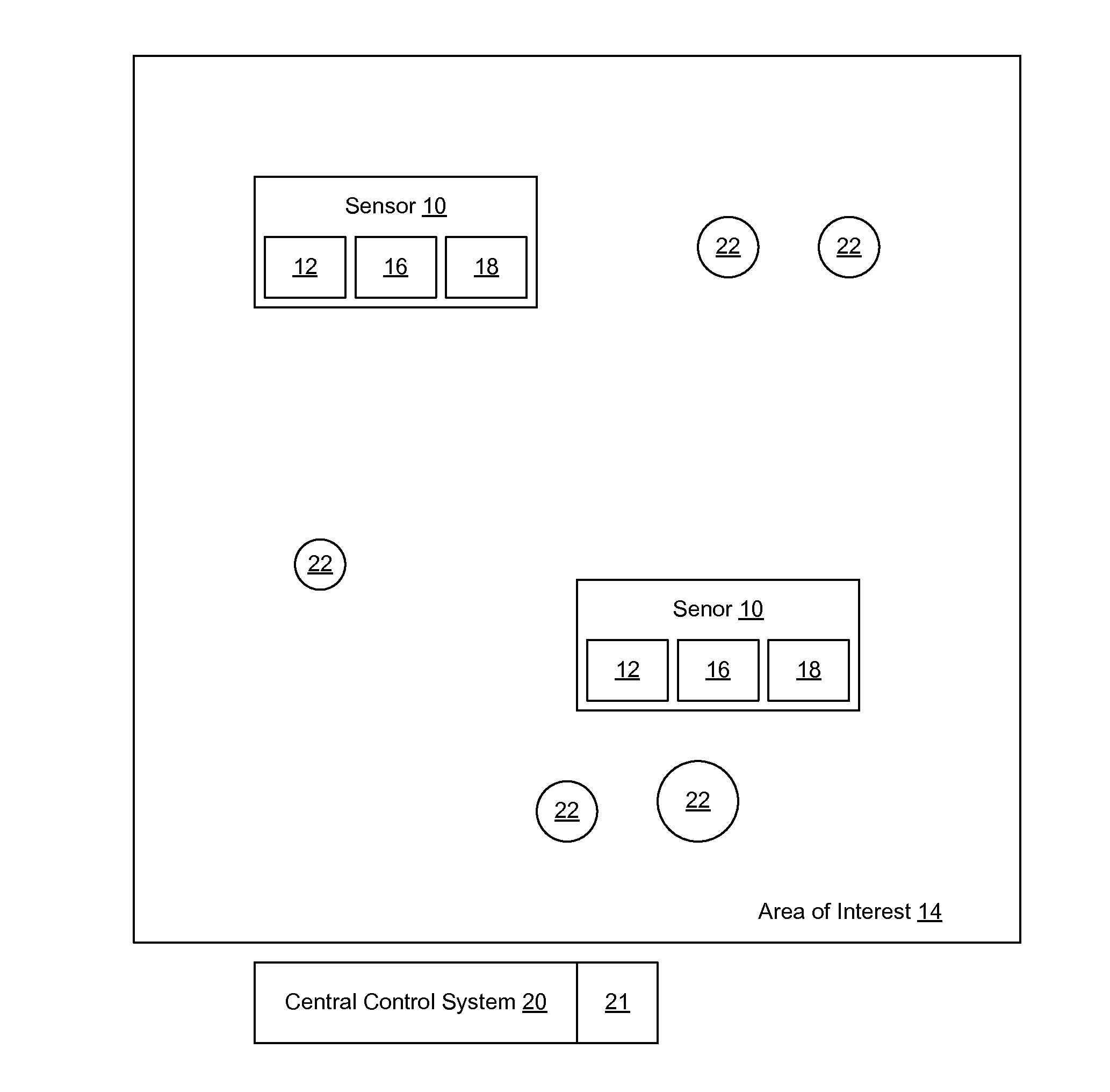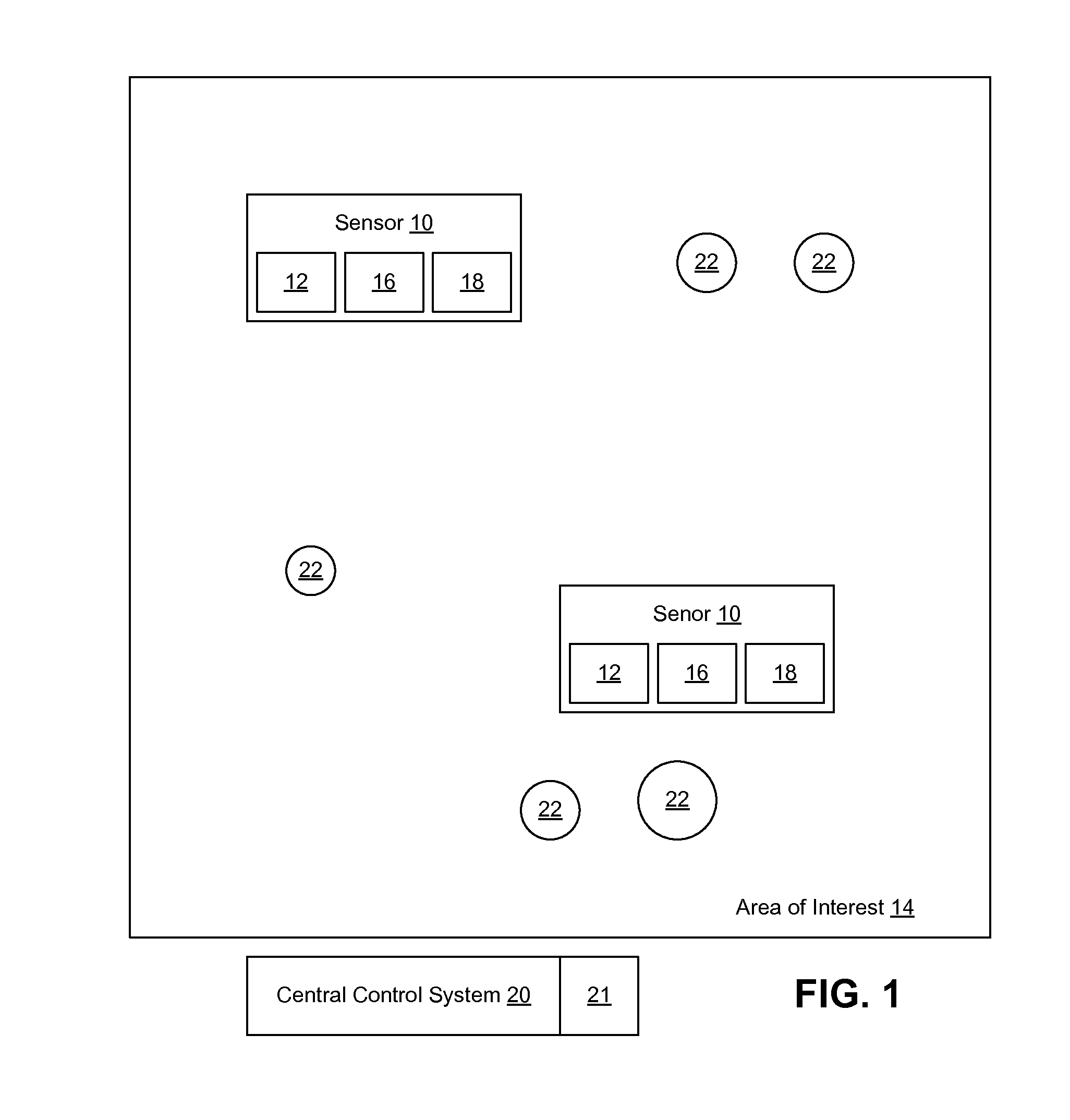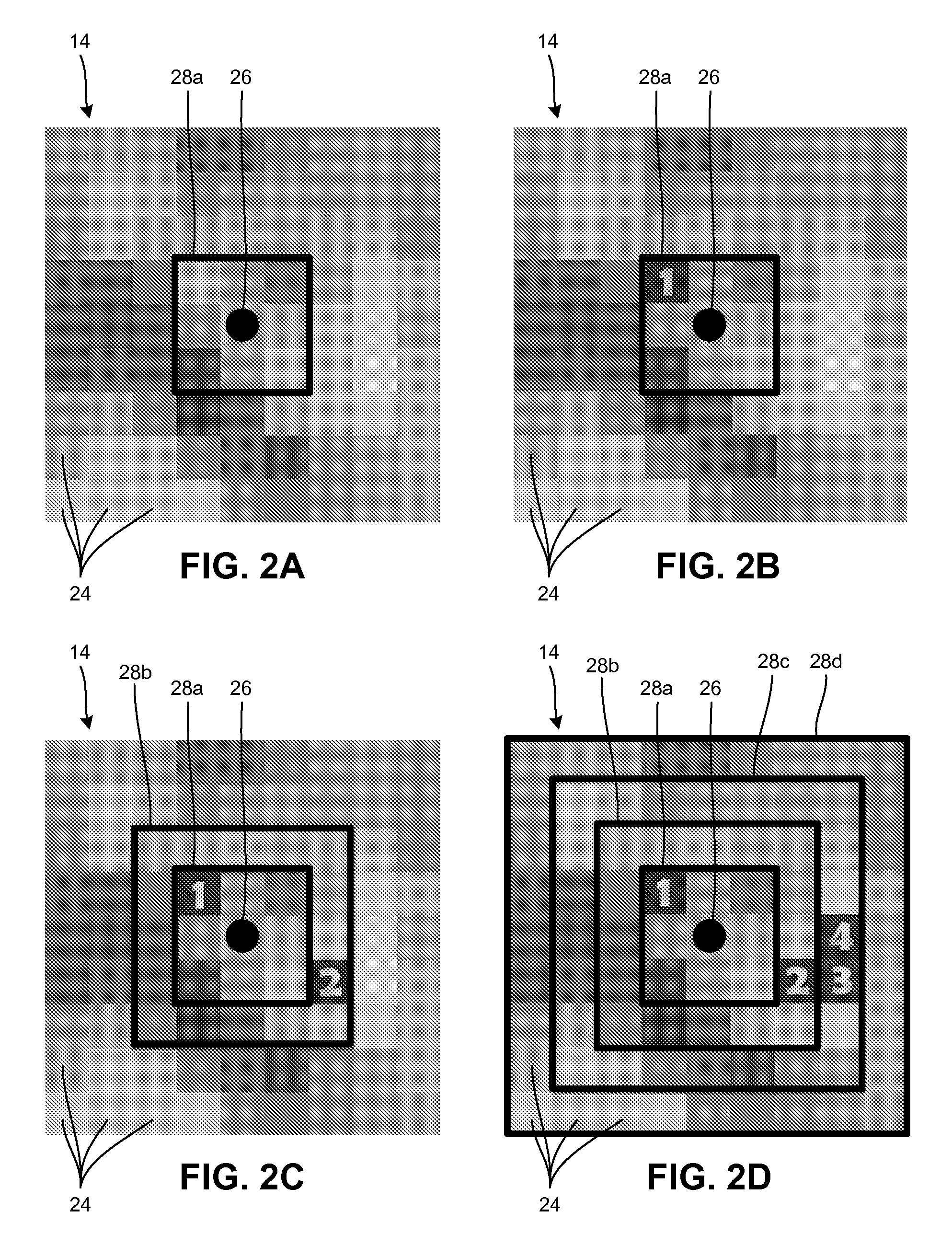System and method for resource allocation and management
a resource allocation and resource management technology, applied in the field of system and method for resource allocation and management, can solve the problems of poor system performance, inefficient resource utilization, and varied and complex system performance goals
- Summary
- Abstract
- Description
- Claims
- Application Information
AI Technical Summary
Problems solved by technology
Method used
Image
Examples
example simulations
4. EXAMPLE SIMULATIONS
[0086]Two simulation scenarios will be used to compare and contrast the various branch and bound techniques that are described in prior sections. The scenarios involve value maps and initial sensor positions, and include sensor movement capability (e.g., cardinal movements or ordinal movements).
[0087]FIG. 7A illustrates an initial probability map 34a for an AOI 14 under a first exemplary scenario. The first scenario relates to an AOI 14 with a fine grid of 78 by 78 grid cells. The map 34a of FIG. 7A is constructed by assuming target 22 presence in certain grid cells and then generating a scaled Gaussian probability distribution around the center of those grid cells with a random variance. Large variances indicate uncertain target 22 positions. For illustration purposes, a scale 36a is depicted with the map. The scale 36a of the Gaussian indicates the likelihood of the presence of a target 22. The higher the value along the scale 36a, the more value that a grid ...
PUM
 Login to View More
Login to View More Abstract
Description
Claims
Application Information
 Login to View More
Login to View More - R&D
- Intellectual Property
- Life Sciences
- Materials
- Tech Scout
- Unparalleled Data Quality
- Higher Quality Content
- 60% Fewer Hallucinations
Browse by: Latest US Patents, China's latest patents, Technical Efficacy Thesaurus, Application Domain, Technology Topic, Popular Technical Reports.
© 2025 PatSnap. All rights reserved.Legal|Privacy policy|Modern Slavery Act Transparency Statement|Sitemap|About US| Contact US: help@patsnap.com



